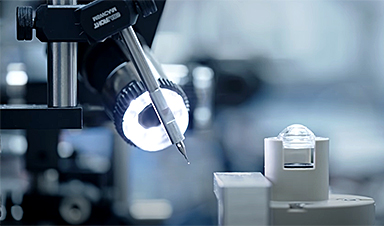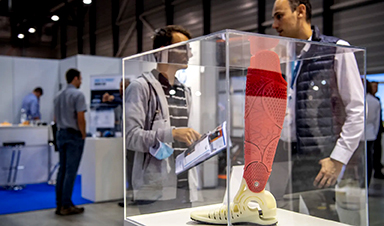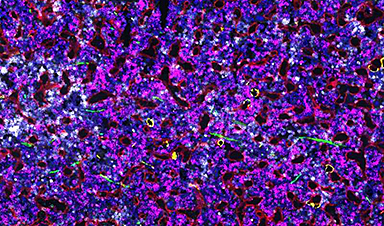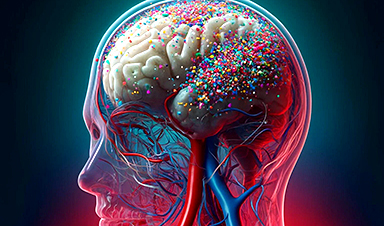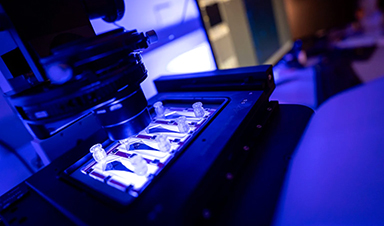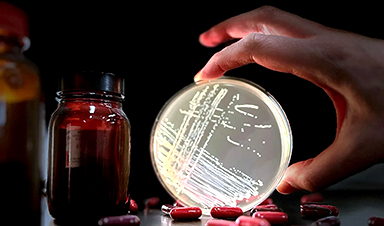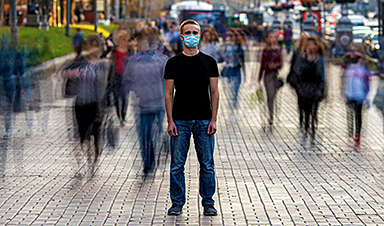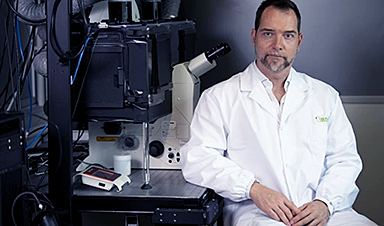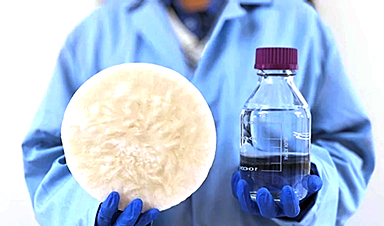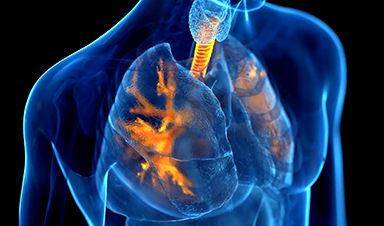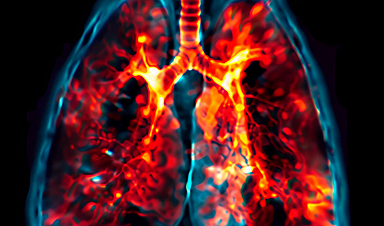| The vision of Purdue University biomedical engineer Chi Hwan Lee to develop specialized smart soft contact lenses that can accurately measure intraocular pressure (IOP) in a person’s eye could be the latest answer to stopping glaucoma-related blindness. | |
| Lee, the Leslie A. Geddes Associate Professor of Biomedical Engineering in Purdue’s Weldon School of Biomedical Engineering, led a research team that developed new ocular technology to continuously monitor patients’ IOP readings more comfortably and accurately. | |
| The technology serves as another option for eye specialists to identify glaucoma, which, according to the Glaucoma Research Foundation, can steal a person’s vision without early warning signs or pain and affects more than 80 million people worldwide. | |
| The only known modifiable risk factor is lowering a person’s IOP, which is difficult to monitor for long periods of time, particularly during sleep. | |
| While exams can be performed in a specialist’s office and at-home monitoring systems are available, these all have their limitations. For instance, in-office measures are time-consuming, and current at-home technology is difficult to use, is uncomfortable and doesn’t gather sufficient data at the right time periods or over long enough time periods for specialists to appropriately use the information to make optimized treatment decisions. | |
| The new technology is highlighted in a study published in the journal Nature Communications (“Smart soft contact lenses for continuous 24-hour monitoring of intraocular pressure in glaucoma care”). The study compares Purdue’s technology to the current gold standard and other home monitoring systems and examines how the Purdue technology can gather important IOP measurements for 24-hour cycles, even during sleep. |
| The technology was developed by a multidisciplinary group of engineers and health care researchers from Purdue’s colleges of Engineering and Veterinary Medicine and the Indiana University School of Optometry. “The largest increase in IOP often occurs while people are lying down, when overnight IOP is typically 10% to 20% greater than daytime IOP. Vision loss may occur during sleep without the patient noticing it, even if daytime in-clinic or at-home measurements indicate normal IOP,” said Lee, who has a joint appointment in the School of Mechanical Engineering and a courtesy appointment in the School of Materials Engineering. | |
| Lee, who has worked on this technology for six years, specializes in sticktronics, which are stickerlike items that contain electronics or smart technology. His lab develops wearable biomedical devices that can continuously monitor chronic diseases or health conditions in an unobtrusive manner. | |
| Dr. Pete Kollbaum, professor and associate dean for research with the Indiana University School of Optometry and director of the school’s Borish Center for Ophthalmic Research, has worked with Lee since 2019. Kollbaum’s Clinical Optics Research Lab group, which researches contact lens technologies, helped with the human clinical testing and provided feedback for design improvements. | |
| Some of the current wearable tonometers — or devices that measure the pressure inside one’s eyes — are equipped with an integrated circuit chip, which leads to increased thickness and is stiffer than a typical commercial soft contact lens, in many cases causing discomfort for patients. Lee’s version is different. | |
| “To address this unmet need, we developed a unique class of smart soft contact lenses built upon various commercial brands of soft contact lenses for continuous 24-hour IOP monitoring, even during sleep at home,” Lee said. | |
| “Our smart soft contact lenses retain the intrinsic lens features of lens power, biocompatibility, softness, transparency, wettability, oxygen transmissibility and overnight wearability. Having all these features at the same time is crucial to the success of translating the smart soft contact lenses into glaucoma care, but these features are lacking in current wearable ocular tonometers.” | |
| The tonometer on the Purdue-developed contact lens sensor creates a wireless recording that is transmitted to a receiver in a pair of eyeglasses for daytime IOP measurement and a sleep mask for IOP measurement when sleeping. | |
| The complete 24-hour IOP rhythm data can be shared with clinicians remotely via an encrypted server. The tonometer can generate an audible alert for detection of IOP elevation, allowing appropriate action to take place and reducing the need for clinic visits. | |
| “This tonometer is significantly more comfortable than any other type of contact lens sensor we have come across and more comfortable than any currently available commercially available IOP sensor,” Kollbaum said. “This is related to the technology that Lee uses to apply the sensor to the lens, retaining a very thin overall sensor, and to the fact that the lens itself is a time-tested, commercially available lens, leveraging the clinical studies and associated time and money the contact lens manufacturers have spent to assure a comfortable lens.” | |
| Kollbaum said that not only do the specialized contact lenses provide crisp vision, just as any contact lens would, but the technology also expands the benefits for both patients and eye specialists, who have wanted less expensive and more comfortable ways to monitor eye changes for years. | |
| “The eye is a very challenging body part that is even softer, more sensitive and curvilinear when compared to the skin,” Lee said. “We hope our approach can be also tailored for aiding and detecting other chronic ocular diseases and for other functions.”Lee and colleagues have a proposal for additional clinical trials with glaucoma patients who have dry eye diseases or who have had glaucoma surgery. They are also working with Boomerang Ventures, with which Purdue has a partnership, to incorporate the technology into clinical practice. |
News
Scientists Invent Plastic That Can Dissolve In Seawater In Just A Few Hours
Plastic waste and pollution in the sea have been among the most serious environmental problems for decades, causing immense damage to marine life and ecosystems. However, a breakthrough discovery may offer a game-changing solution. [...]
Muscles from the 3D printer
Swiss researchers have developed a method for printing artificial muscles out of silicone. In the future, these could be used on both humans and robots. Swiss researchers have succeeded in printing artificial muscles out [...]
Beneficial genetic changes observed in regular blood donors
Researchers at the Francis Crick Institute have identified genetic changes in blood stem cells from frequent blood donors that support the production of new, non-cancerous cells. Understanding the differences in the mutations that accumulate [...]
Shocking Amounts of Microplastics in the Brain – It Could Be Increasing Our Risk of Dementia
The brain has higher concentrations of plastic particles compared to other organs, with increased levels found in dementia patients. In a comprehensive commentary published in Brain Medicine, researchers highlight alarming new evidence of microplastic accumulation [...]
Baffling Scientists for Centuries: New Study Unravels Mystery of Static Electricity
ISTA physicists demonstrate that contact electrification depends on the contact history of materials. For centuries, static electricity has intrigued and perplexed scientists. Now, researchers from the Waitukaitis group at the Institute of Science and [...]
Tumor “Stickiness” – Scientists Develop Potential New Way To Predict Cancer’s Spread
UC San Diego researchers have developed a device that predicts breast cancer aggressiveness by measuring tumor cell adhesion. Weakly adherent cells indicate a higher risk of metastasis, especially in early-stage DCIS. This innovation could [...]
Scientists Just Watched Atoms Move for the First Time Using AI
Scientists have developed a groundbreaking AI-driven technique that reveals the hidden movements of nanoparticles, essential in materials science, pharmaceuticals, and electronics. By integrating artificial intelligence with electron microscopy, researchers can now visualize atomic-level changes that were [...]
Scientists Sound Alarm: “Safe” Antibiotic Has Led to an Almost Untreatable Superbug
A recent study reveals that an antibiotic used for liver disease patients may increase their risk of contracting a dangerous superbug. An international team of researchers has discovered that rifaximin, a commonly prescribed antibiotic [...]
Scientists Discover Natural Compound That Stops Cancer Progression
A discovery led by OHSU was made possible by years of study conducted by University of Portland undergraduates. Scientists have discovered a natural compound that can halt a key process involved in the progression [...]
Scientists Just Discovered an RNA That Repairs DNA Damage – And It’s a Game-Changer
Our DNA is constantly under threat — from cell division errors to external factors like sunlight and smoking. Fortunately, cells have intricate repair mechanisms to counteract this damage. Scientists have uncovered a surprising role played by [...]
What Scientists Just Discovered About COVID-19’s Hidden Death Toll
COVID-19 didn’t just claim lives directly—it reshaped mortality patterns worldwide. A major international study found that life expectancy plummeted across most of the 24 analyzed countries, with additional deaths from cardiovascular disease, substance abuse, and mental [...]
Self-Propelled Nanoparticles Improve Immunotherapy for Non-Invasive Bladder Cancer
A study led by Pohang University of Science and Technology (POSTECH) and the Institute for Bioengineering of Catalonia (IBEC) in South Korea details the creation of urea-powered nanomotors that enhance immunotherapy for bladder cancer. The nanomotors [...]
Scientists Develop New System That Produces Drinking Water From Thin Air
UT Austin researchers have developed a biodegradable, biomass-based hydrogel that efficiently extracts drinkable water from the air, offering a scalable, sustainable solution for water access in off-grid communities, emergency relief, and agriculture. Discarded food [...]
AI Unveils Hidden Nanoparticles – A Breakthrough in Early Disease Detection
Deep Nanometry (DNM) is an innovative technique combining high-speed optical detection with AI-driven noise reduction, allowing researchers to find rare nanoparticles like extracellular vesicles (EVs). Since EVs play a role in disease detection, DNM [...]
Inhalable nanoparticles could help treat chronic lung disease
Nanoparticles designed to release antibiotics deep inside the lungs reduced inflammation and improved lung function in mice with symptoms of chronic obstructive pulmonary disease By Grace Wade Delivering medication to the lungs with inhalable nanoparticles [...]
New MRI Study Uncovers Hidden Lung Abnormalities in Children With Long COVID
Long COVID is more than just lingering symptoms—it may have a hidden biological basis that standard medical tests fail to detect. A groundbreaking study using advanced MRI technology has uncovered significant lung abnormalities in [...]
